Badminton officials play a very important role in the badminton matches. Even though they are not as crucial as they can be in other sports such as football or basketball due to the lack of physical contact between players, they still are required in order to ensure a smooth and fair match. The badminton officials are divided into different roles or positions:
- Referee
- Umpire
- Service judge
- Line judge
In this post, we will explain the role of each official, the requirements and training needed.
HaveDo you want to improve your badminton game? Then be sure to sign up for Badminton Famly+ by clicking here. Founded by former World Champion Thomas Laybourn, Badminton Famly+ is the best online training platform for badminton.
Referee
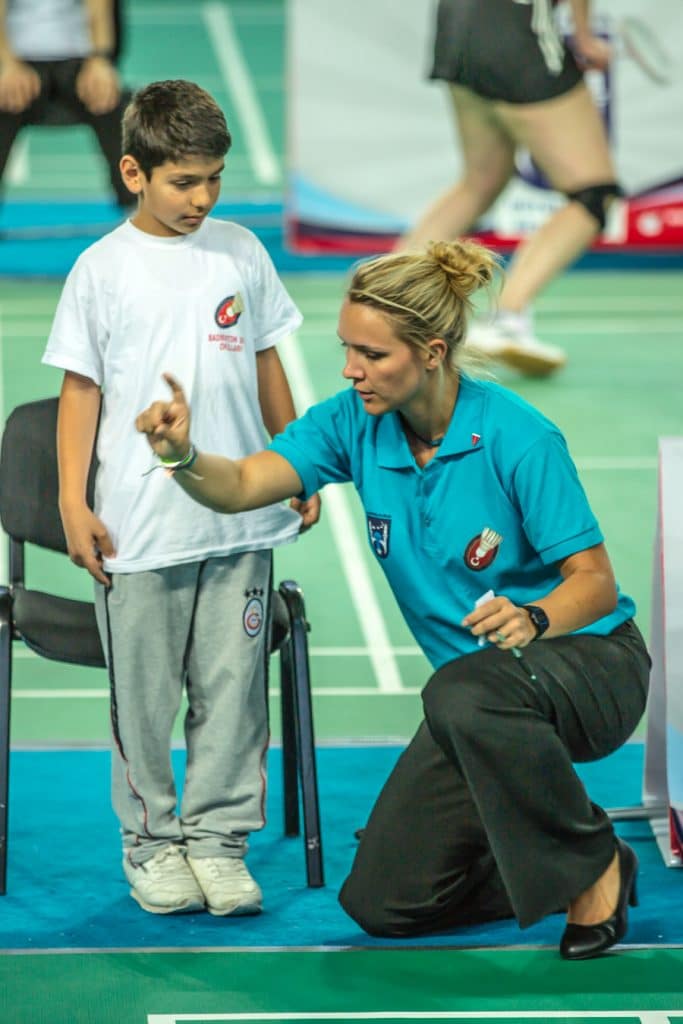
Role of the referee
The referee is the most important official of the whole tournament. He or she is in charge of the competition and needs to ensure that the tournament is conducted following the Laws of Badminton (including court, rackets and shuttlecock measurements), the regulations of the Badminton World Federation and/or any other regulations that might be relevant in that specific competition.
In addition to that, the referee has the last word if there is an argument between the umpire (in charge of the matches) and a player or team.
Moreover, the referee makes sure that the facilities and the conditions to play are up to the standards required for that specific tournament. For example, he has to check that the badminton mats are mounted correctly so they can enhance gameplay.
Finally, the referee is also in charge of the approval of the schedule of matches and practice (if applicable).
Referee Levels
The first levels will depend on which country the official is from. Once you get to the Badminton World Federation tournaments, the level is unified. Within Europe, there are the following levels:
- National Level Referee
- European Continental Referee
Once you are a European Continental Referee, it takes usually 24 months before you can be proposed towards the Badminton World Federation. In there, there are two additional levels:
- BWF Accredited
- BWF Certificated – the highest level.
Referee Training and Assessment
The details towards the highest level will vary depending on the specific country the referee is in. However, the general path is fairly similar. First, the referee will need to undertake some training in his/her country in order to become a National Level Referee. The length and difficulty of this training will depend on the country the referee comes from.
In the case of Europe, after becoming a National Level Referee, the referee can apply to become a BEC Continental Referee. This can be achieved only after undertaking a course organised by Badminton Europe. Referees who are at a sufficient level and experience can be promoted to BWF Accredited or Certificated Referees. In the case of Europe, it takes usually around 24 months.
In case of United States, the whole process is managed through USA Badminton.
Referee Retirement Age
The retirement age for referees is 65 years old, and no assessment to become a Badminton Europe Referee is done to referees over 60 years old.
If you would like to know a bit more about the referees, check our badminton referee post.
Umpire
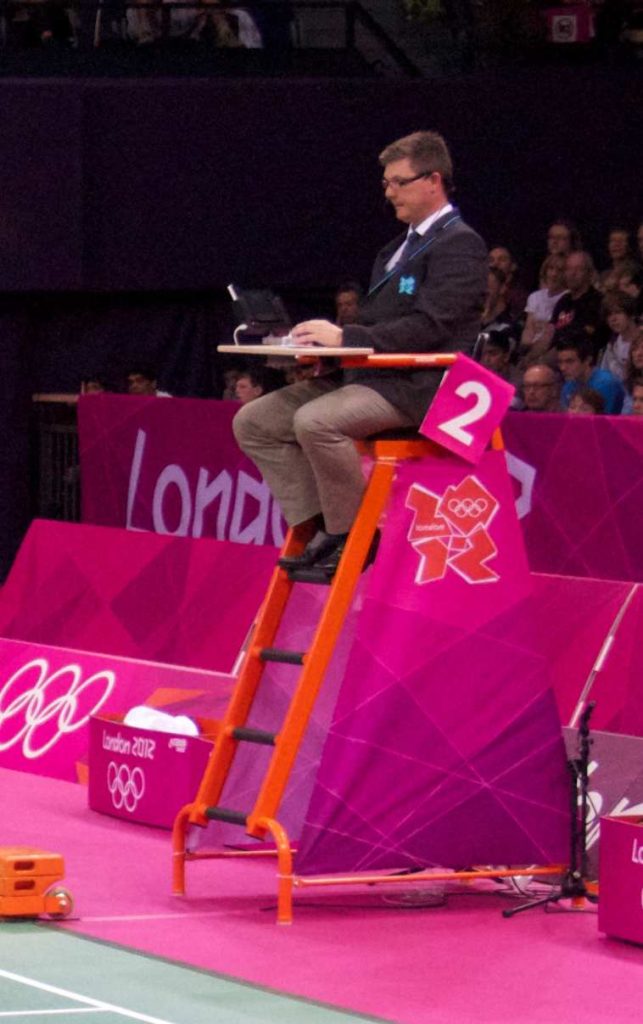
Role of the Umpire
The umpire is the maximum authority in a particular match and it is in charge of the court. The duty of the umpire is to make sure that the specific match is conducted following the Laws of Badminton, the regulations of the Badminton World Federation and/or any other regulations that might be relevant in that specific competition.
It is the umpire responsibility to judge service faults and other player faults. The umpire keeps a record of any misbehaviour or incident and reports it to the referee. He/she is also responsible for keeping the match score, which will be announced after each point of the match.
The umpire has control over the specific match but also needs to report any serious acts to the referee, who is, at the end, the maximum authority of the tournament.
Outside of the major tournaments, the referee will also take the role of an umpire in order to help with the process.
Umpire Levels
The first levels will depend on which country the umpire comes from. Once the umpire gets to the Badminton World Federation tournaments, the levels are unified. Within Europe, there are the following levels:
- National Level Umpire
- BEC (Badminton Europe) Accredited Umpire
- BEC (Badminton Europe) Certificated Umpire
Once the umpire is a BEC (Badminton Europe) Accredited Umpire, you need at least 24 months before he/she can be assessed towards becoming a BEC (Badminton Europe) Certificated Umpire. After that, another 24 months are needed before he/she can be proposed for an Assessment towards the BWF Accredited Umpire. In the Badminton World Federation, there are two additional levels:
- BWF Accredited
- BWF Certificated – the highest level.
Umpire Training and Assessment
The details towards the highest level will vary depending on the specific country the umpire comes from. However, the general path is fairly similar. First, the umpire will need to undertake some training in his/her country in order to become a National Level Umpire. The length and difficulty of this training will depend on the country the official is at.
In the case of Europe, after becoming a National Level Umpire, the umpire can apply to become BEC Accredited Umpire. This can be achieved only after undertaking the Badminton Europe Umpire course organised by Badminton Europe.
An Umpire can be assessed towards BEC Certificated Umpire after usually 24 months of being a BEC Accredited Umpire.
After that, the Umpire needs to be active for another 24 months before he or she can be proposed towards an Assessment to become BWF Accredited or Certificated Referees.
Umpire Retirement Age
The retirement age for umpires is 60 years old for Europe Umpires, and 55 years old for BWD Umpires. For Badminton Europe umpires, no assessment is done to umpires over 55 years old.
If you would like to know a bit more about badminton umpires, check our badminton umpires post.
Service Judge
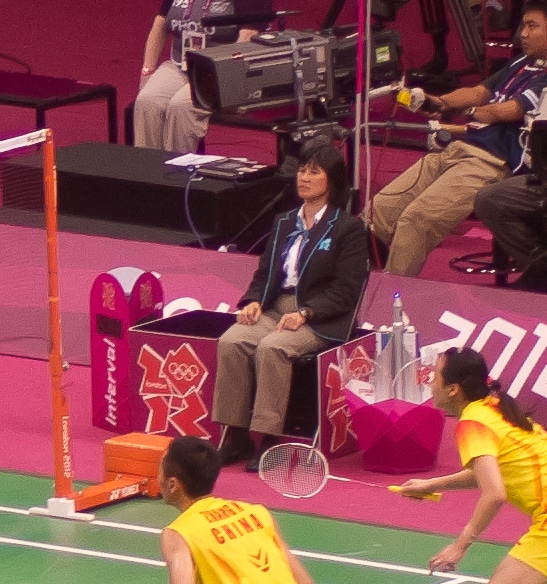
Role of the Service Judge
The service judge is responsible for making a ‘service fault’ call and to provide shuttles to the players. Due to the way badminton is played, the
In addition to checking the service, the service judge usually takes care of the shuttles, providing the players with new shuttles whenever required.
In smaller championships, when there is no service judge, the umpire takes the role of the service judge.
Service Judge Levels
You need the same training to become a Service Judge as to become an umpire. Therefore, the same levels are present as the roles are interchanged.
Service Judge Training and Assessment
As with the levels, the training is also the same than that of the Umpire.
Service Judge Retirement Age
As with the levels and the training, the retirement age is also the same than that of the Umpire.
If you would like to know a bit more about badminton service judges, check our badminton service judges post.
Line Judges
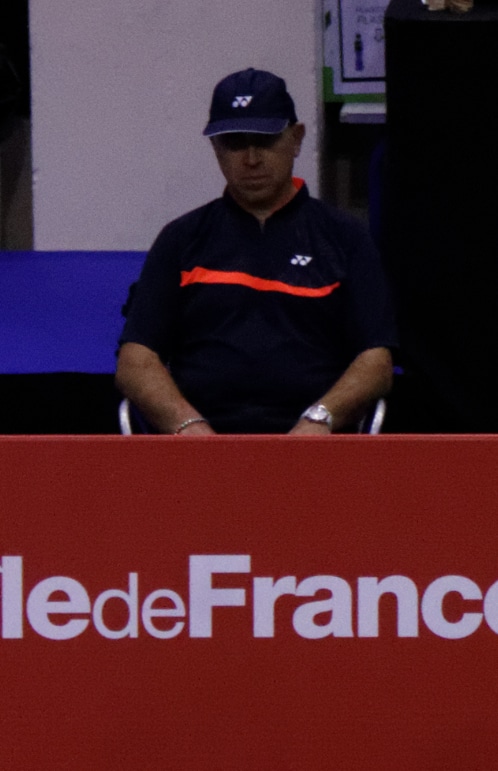
Role of the Line Judge
The line judges are responsible for indicating whether a shuttlecock landed “in” or “out” if the shuttle lands near the lines he/she is assigned to control. Due to the fast speed of the game and the skill of the players, this is a very challenging job and, as a result, the line judges are the officials that usually get more pressure from the players.
In recent years, an Instant Review System has been implemented, that helps ensure that the right decision is taken, but which also adds pressure to the line judges as it clearly shows when a mistake has taken place. Each player has two incorrect calls per game of the match.
Depending on the level of the tournament, there may be as many as 10 line judges assigned to a court for a particular match. This is the number recommended by the BWF.
When 10 line judges are available, they are positioned as follows:
- 2 line judges for the short service line (one on each side of the court)
- 2 line judges for the centre line (one on each end of the court)
- 4 line judges for the side lines (two on each side of the
courte ). Please note that the exact location will depend on whethera singles match is being played (and they would follow the singles side lines) or a doubles match is being played (and they would follow the doubles side lines - 2 line judges for the back boundary lines (one each end of the court). Please note that, in the case of the doubles match, these line judges check both the back boundary line and the long service line.
Badminton Bilingüe from Alberto García
Line Judge Levels
The division of levels in line judges is not as detailed as with umpires or referees. In this case, it will largely depend on the country the line judge comes from, but most of them only have one level in the country. Once the line judge has become a national line judge and has some experience at a national or continental level, he or she can be nominated by the respective confederation to become a BWF line judge. The BWF will choose based on the nominations to ensure appropriate regional representation.
Currently, the BWF has a pool of more than 100 international line judges who serve at BWF major events such as the BWF World Championships, Sudirman Cup, Thomas & Uber Cups, and major multi-sport events such as the Olympic Games.
Line Judge Training and Assessment
The training, as the levels, is not as defined and demanding for line judges as it is for umpires or referees.
All the training is done in the country or continent of origin and there is no BWF course or certification. This means that the path for the line judges will vary a lot depending on the country of origin. In England, for example, only a course is required to become a Line Judge.
Once you have become a national line judge, as we mentioned above, there is no extra training required. The BWF focuses the improvement on practice (page 12 of the document), so the line judge needs to get as much experience as possible in order to be placed in more important matches. Finally, the line judge will need the endorsement of your national or continental confederation in order to be considered for a position as BWF Line Judge.
Line Judge Retirement Age
There is no retirement age available for line judges. In general, BWF line judges serve four-year terms with an opportunity to renew for a second term. In the countries, this will vary a lot and it will not be as demanding as with the umpires or referees
If you would like to know a bit more about badminton line judges, check our badminton line judges post.
Product recommendations for badminton officials
For officials, there are certain products that might be interesting to purchase. I have listed them below with some product recommendations.
Clothing – Non-marking shoes are the most important item
I think the most important product is non-marking shoes. Most matches where officials are present will be played in badminton mats. If not, most likely it will be on wooden floors. In both cases, it is very important that the shoes have non-marking soles. Therefore, consider getting some non-marking and comfortable shoes such as Gola Men’s fitness shoes. You can buy them on Amazon following this link.
A stopwatch – The most important gadgets for umpires
In order to control the time in between rallies and sets, badminton umpires should always be equipped with a stopwatch. There are a lot of options on Amazon to choose from. An affordable and very well rated option is the ACCUSPLIT Pro Survivor.
A scoreboard and a pen – The tools to keep count
In most badminton matches, the count will be controlled by the umpire through a scoreboard that the organisation provides. The organisation will also provide pens for the umpires so they can fill in the scoreboards
A clipboard – The tool every umpire needs
In order to hold the scoreboard and the pen comfortably, I would recommend all umpires to have a clipboard. They are very affordable and will make the process of writing much easier. This set of 30 by Office Solutions Direct that can be bought on Amazon is not only inexpensive but also eco-friendly.
Want to bring your badminton to the next level? Check Badminton Famly+
If you want to improve your game, you can sign up for the Badminton Famly+ program following this affiliate link. By following this link, you will receive 30% off the first month.
This e-learning platform is co-created by Thomas Laybourn, Danish player, former World number 1, World Champion, and professional coach.
They are doing an awesome job with their online training and they have an incredible amount of information on how to improve your game.
With such trustworthy founders, it is no surprise that this is, by far, the best online training program I have been able to find.
Final words
And with this, we have arrived to the end of this post. In it, we have described the four types of badminton officials that exist. These are, first, the Referee, the main responsible for the whole tournament. Second, the umpire, the main responsible for specific matches. Third, the service judge, in charge of checking the serves, giving the shuttlecocks and assisting the umpire. Fourth, the line judges, in charge of calling “in” or “out” for shots very close to the lines they are responsible for.
For all these roles, there officials are divided in different levels, being part of the BWF being the highest one. To get there, certain training, assessment and experience is required.
I hope you found the post useful. If you would like to know something else about the badminton officials or have any other comments, please let us know in the section below.
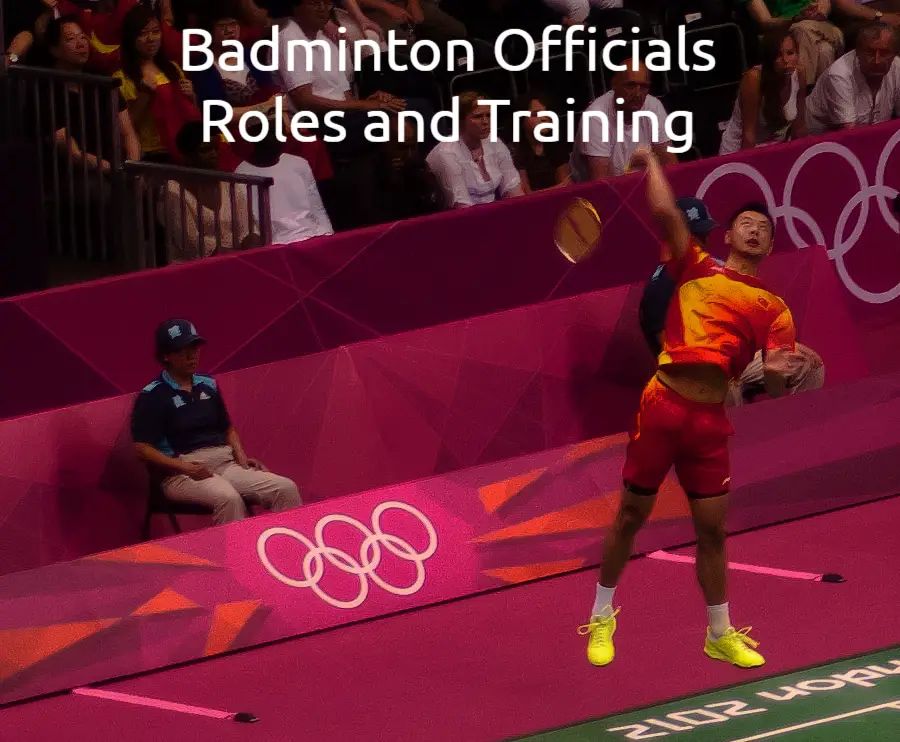

Useful information…
yes it is great
very good